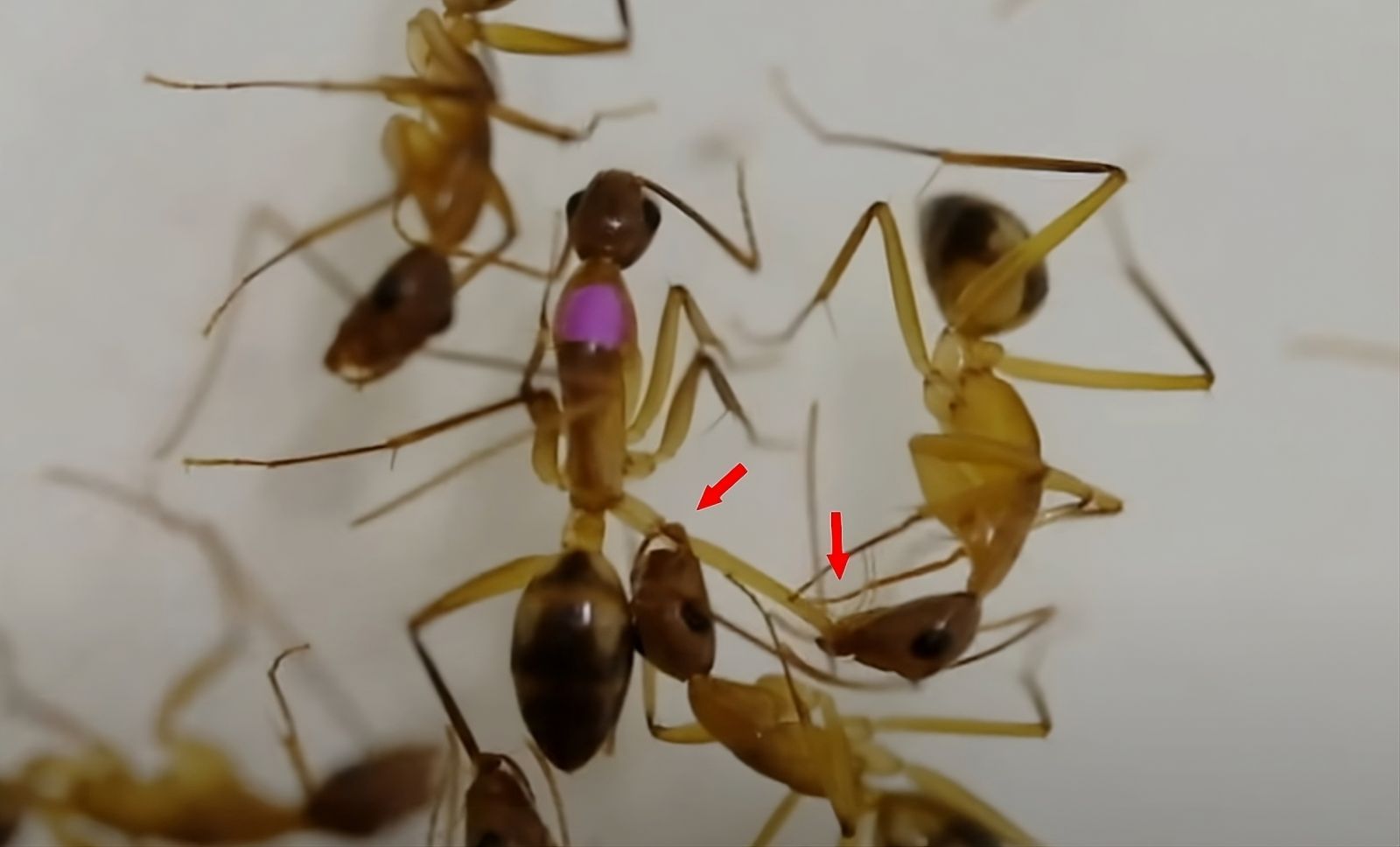Video: this animal knows how to treat and when to amputate its fellow ants to ensure their survival
Published by Cédric,
Article by: Cédric DEPOND
Source: Current Biology
Other Languages: FR, DE, ES, PT
Article by: Cédric DEPOND
Source: Current Biology
Other Languages: FR, DE, ES, PT
Follow us on Google News (click on ☆)

The research team focused on this species because of the absence of the metapleural gland, an antiseptic organ found in about 20% of other ant species. To understand how Camponotus floridanus manages to treat their wounds despite this absence, the researchers conducted a series of experiments. They cut the legs of these ants and observed the colony's reactions.
They noted two distinct behaviors depending on the location of the injury. For a tibial injury, the ants merely cleaned the wound, with a 75% survival rate. Conversely, for a femoral injury, they proceeded with an amputation after basic cleaning, increasing the survival rate to 90%. The researchers then tested the effect of amputation on injured tibias themselves and found a survival rate of only 20%, much lower than that achieved by simple cleaning.
This differentiation in treatment is explained by the circulation of hemolymph, the circulatory fluid of insects. The muscles responsible for this circulation are located at the femur. An injury at this level slows the transport of bacteria, allowing the ants the necessary time to amputate the infected leg. However, a tibial injury does not slow down the hemolymph circulation, making wound cleaning more effective than amputation.
Camponotus floridanus ants thus show an impressive ability to diagnose the severity of an injury and apply the appropriate treatment. They know precisely when an amputation is necessary to maximize the chances of survival of their fellow ants, demonstrating remarkable social and medical organization. This discovery opens new perspectives on the medical behavior of social insects and their ability to adapt to infections.